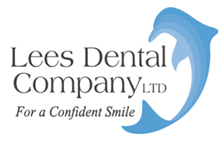Bridges
Bridges are used to replace missing teeth. Usually a bridge can only replace one or two missing teeth. Bridges rely on adjacent teeth to provide support and retention for the replacement tooth. The adjacent teeth need to be sufficiently healthy and strong to support the extra load transmitted to them from the replacement tooth. This means that they have no decay, have a healthy pulp (the 'nerve' inside the tooth) or be well root-filled, have healthy gum tissue and good bone support.
Bridges often have crowns on both adjacent teeth joined to the 'false' or replacement tooth. If the tooth to be replaced is small it may be possible to gain support from just one adjacent tooth, i.e a cantilever.
Bridges are cemented into position and are not removable. Because a bridge is made of linked teeth it is necessary to clean in a different way under the replacement tooth where it touches the gum. You will be shown how to do this. For other information about the crowns retaining the bridge please see the information sheet on Crowns.
Maryland Bridges
In certain situations it is possible to replace a single tooth by using a bridge that is literally bonded to an adjacent tooth, rather than having to crown that tooth.
The replacement tooth has a very thin metal 'wing' that is bonded to the tongue or 'palate' side of a healthy tooth. This type of bridge is used for front teeth and needs a healthy tooth to hold it in and not a particular 'heavy' bite. Maryland bridges very occasionally come off but are simply re-cemented.
124 St Aubyn Street
New Plymouth
Phone. 06 759 1630

